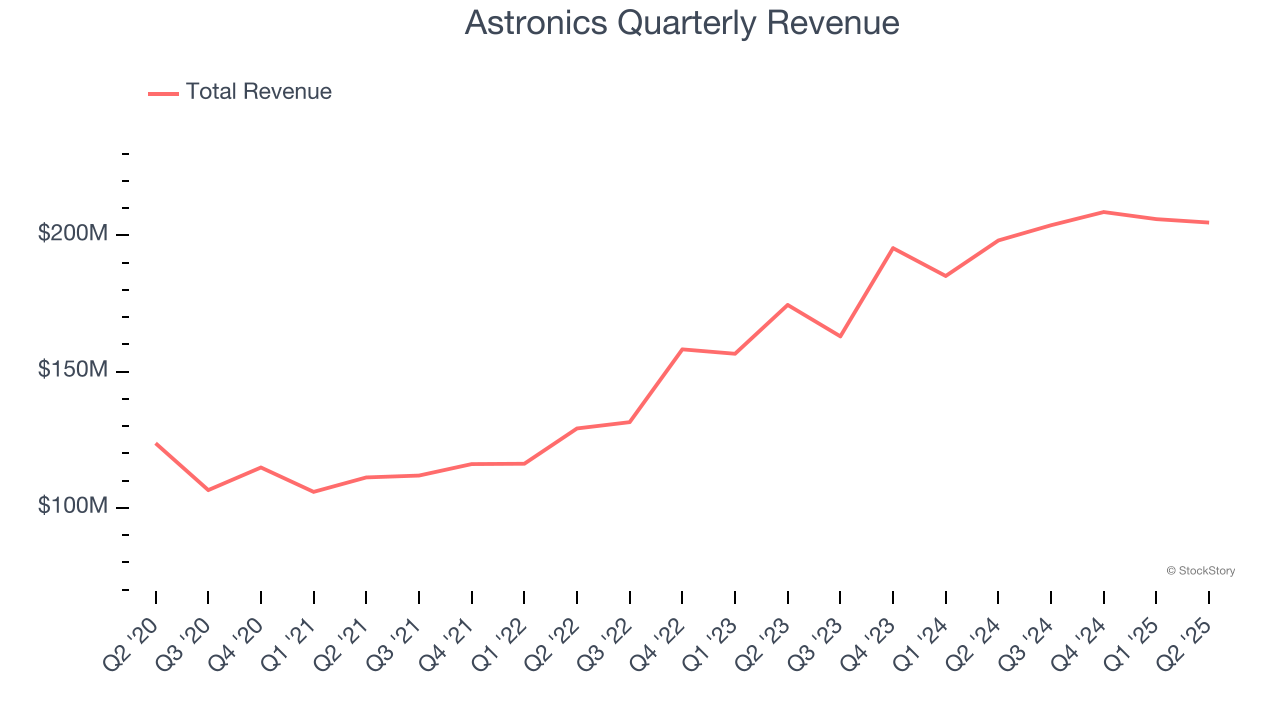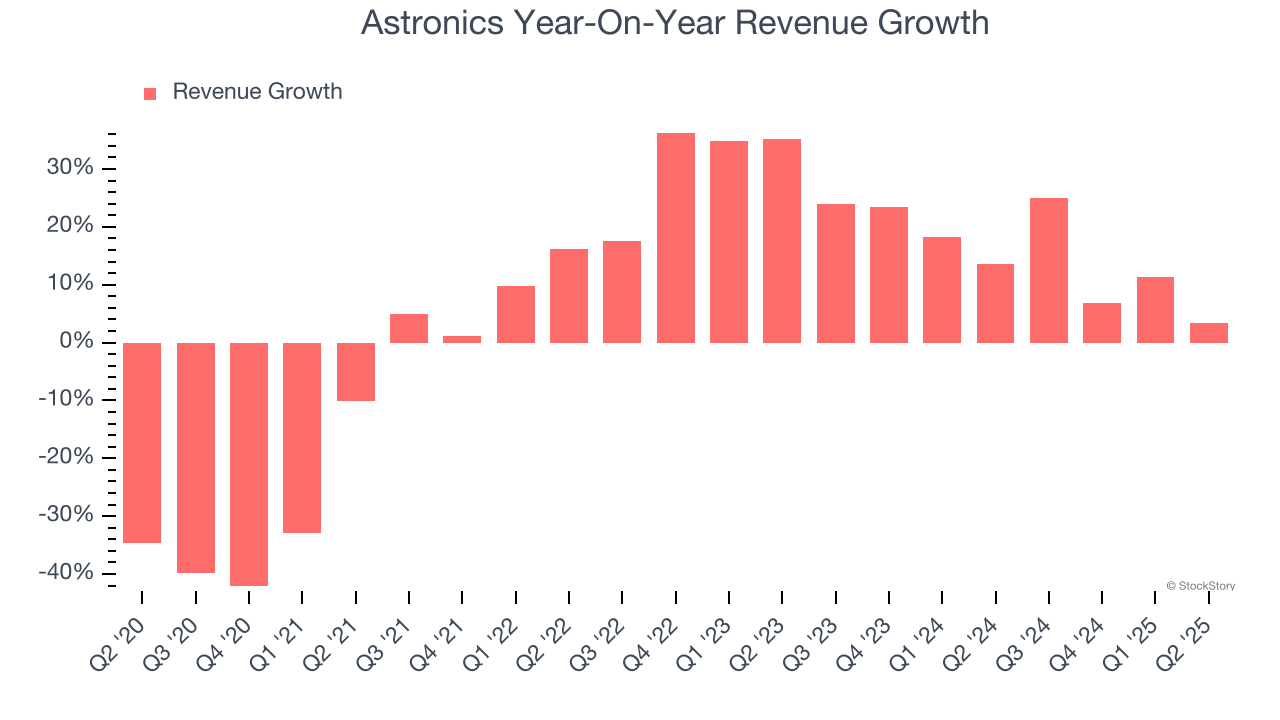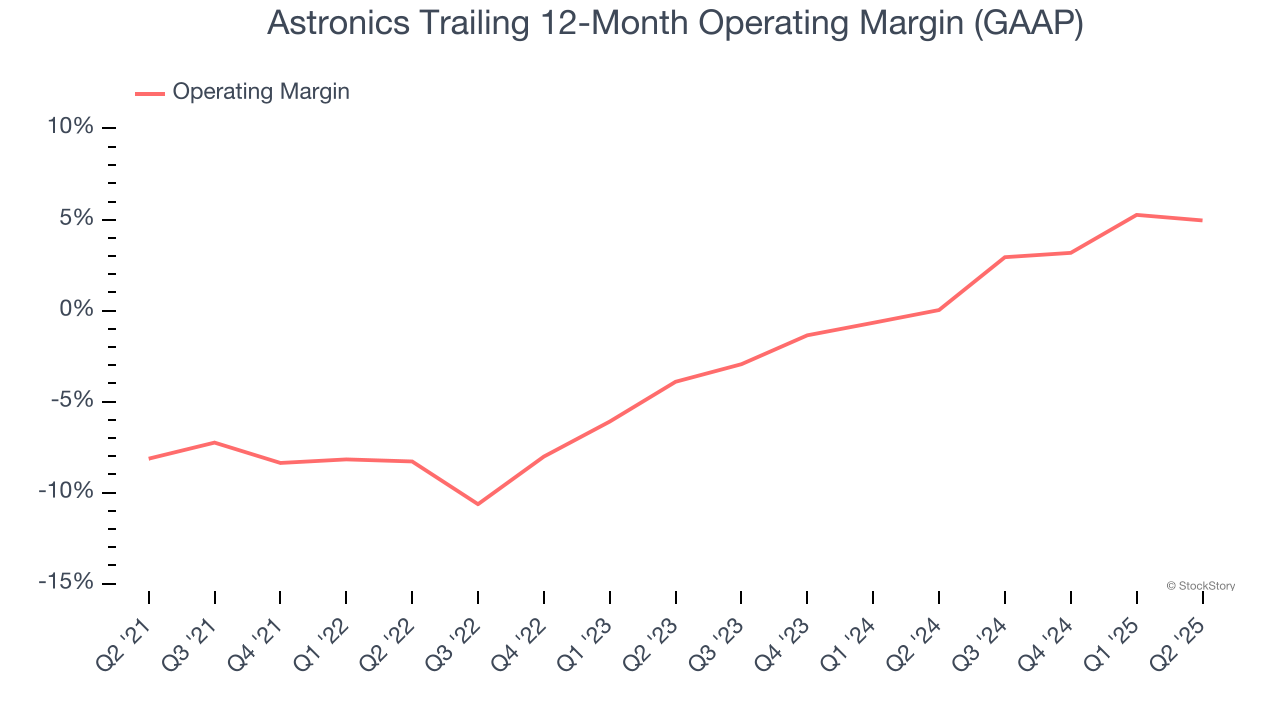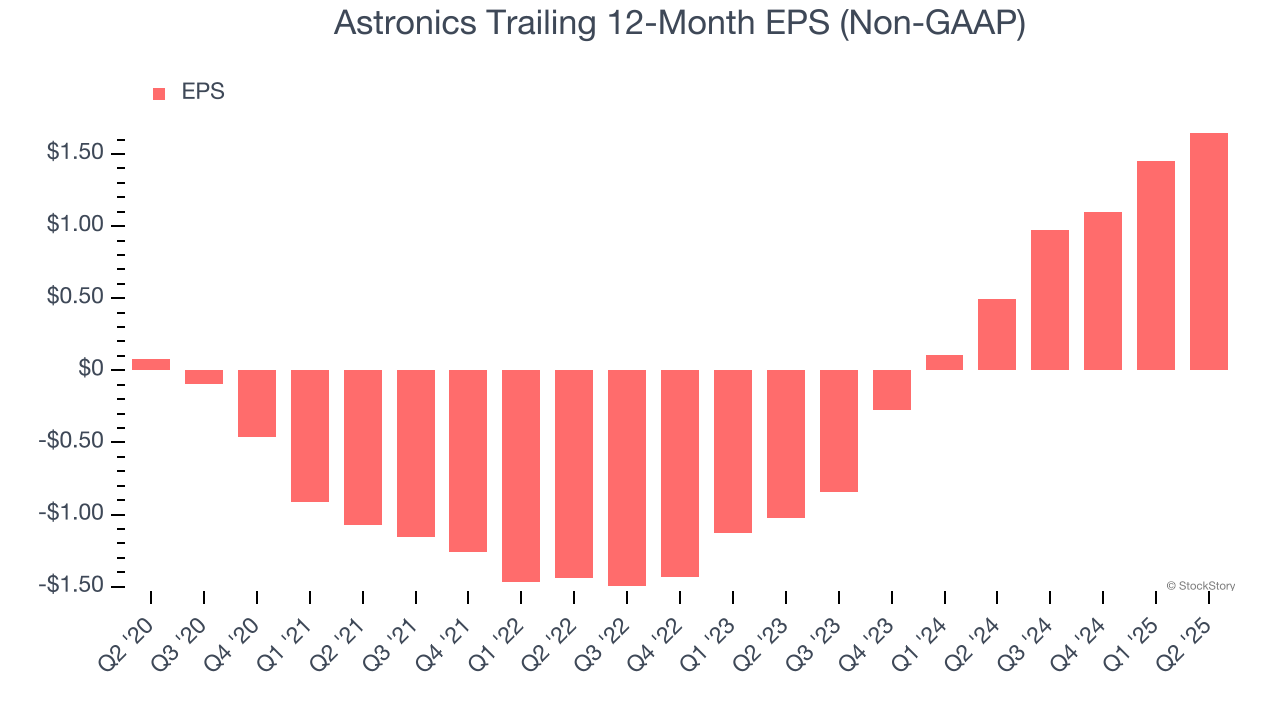
Aerospace and defense technology solutions provider Astronics Corporation (NASDAQ:ATRO) missed Wall Street’s revenue expectations in Q2 CY2025 as sales rose 3.3% year on year to $204.7 million. On the other hand, the company’s full-year revenue guidance of $850 million at the midpoint came in 0.6% above analysts’ estimates. Its non-GAAP profit of $0.38 per share was in line with analysts’ consensus estimates.
Is now the time to buy Astronics? Find out by accessing our full research report, it’s free.
Astronics (ATRO) Q2 CY2025 Highlights:
- Revenue: $204.7 million vs analyst estimates of $208.3 million (3.3% year-on-year growth, 1.7% miss)
- Adjusted EPS: $0.38 vs analyst estimates of $0.38 (in line)
- Adjusted EBITDA: $25.41 million vs analyst estimates of $30.83 million (12.4% margin, 17.6% miss)
- The company lifted its revenue guidance for the full year to $850 million at the midpoint from $840 million, a 1.2% increase
- Operating Margin: 2.3%, down from 3.5% in the same quarter last year
- Free Cash Flow was -$12.24 million compared to -$8.06 million in the same quarter last year
- Backlog: $645.4 million at quarter end
- Market Capitalization: $1.26 billion
Peter J. Gundermann, Chairman, President and Chief Executive Officer, commented, “We had a very solid second quarter and demonstrated continued progress as revenue stabilizes above $200 million per quarter. We also took some actions that will improve our future earnings power. After a company-wide review of our product portfolio, we took the action to step away from a couple of product lines that have proven to be low margin and low growth. We also took a meaningful increase in our estimate to complete for some projects in our Test business, which masked the progress we have made restructuring that business in recent quarters. These actions will allow us to simplify our business and focus on efforts that promise the greatest returns. Combined with the supportive market conditions we are experiencing, we believe we are well positioned for the future as we look to finish strong in 2025 and beyond.”
Company Overview
Integrating power outlets into many Boeing aircraft, Astronics (NASDAQ:ATRO) is a provider of technologies and services to the global aerospace, defense, and electronics industries.
Revenue Growth
A company’s long-term sales performance is one signal of its overall quality. Any business can have short-term success, but a top-tier one grows for years. Over the last five years, Astronics grew its sales at a tepid 4.6% compounded annual growth rate. This wasn’t a great result compared to the rest of the industrials sector, but there are still things to like about Astronics.

We at StockStory place the most emphasis on long-term growth, but within industrials, a half-decade historical view may miss cycles, industry trends, or a company capitalizing on catalysts such as a new contract win or a successful product line. Astronics’s annualized revenue growth of 15.1% over the last two years is above its five-year trend, suggesting its demand recently accelerated. 
This quarter, Astronics’s revenue grew by 3.3% year on year to $204.7 million, falling short of Wall Street’s estimates.
Looking ahead, sell-side analysts expect revenue to grow 5.1% over the next 12 months, a deceleration versus the last two years. This projection is underwhelming and implies its products and services will face some demand challenges. At least the company is tracking well in other measures of financial health.
Today’s young investors won’t have read the timeless lessons in Gorilla Game: Picking Winners In High Technology because it was written more than 20 years ago when Microsoft and Apple were first establishing their supremacy. But if we apply the same principles, then enterprise software stocks leveraging their own generative AI capabilities may well be the Gorillas of the future. So, in that spirit, we are excited to present our Special Free Report on a profitable, fast-growing enterprise software stock that is already riding the automation wave and looking to catch the generative AI next.
Operating Margin
Although Astronics was profitable this quarter from an operational perspective, it’s generally struggled over a longer time period. Its expensive cost structure has contributed to an average operating margin of negative 1.9% over the last five years. Unprofitable industrials companies require extra attention because they could get caught swimming naked when the tide goes out.
On the plus side, Astronics’s operating margin rose by 13.1 percentage points over the last five years, as its sales growth gave it operating leverage. Still, it will take much more for the company to show consistent profitability.

In Q2, Astronics generated an operating margin profit margin of 2.3%, down 1.2 percentage points year on year. This reduction is quite minuscule and indicates the company’s overall cost structure has been relatively stable.
Earnings Per Share
Revenue trends explain a company’s historical growth, but the long-term change in earnings per share (EPS) points to the profitability of that growth – for example, a company could inflate its sales through excessive spending on advertising and promotions.
Astronics’s EPS grew at an astounding 85.1% compounded annual growth rate over the last five years, higher than its 4.6% annualized revenue growth. This tells us the company became more profitable on a per-share basis as it expanded.

We can take a deeper look into Astronics’s earnings quality to better understand the drivers of its performance. As we mentioned earlier, Astronics’s operating margin declined this quarter but expanded by 13.1 percentage points over the last five years. This was the most relevant factor (aside from the revenue impact) behind its higher earnings; interest expenses and taxes can also affect EPS but don’t tell us as much about a company’s fundamentals.
Like with revenue, we analyze EPS over a more recent period because it can provide insight into an emerging theme or development for the business.
For Astronics, its two-year annual EPS growth of 89.9% was higher than its five-year trend. We love it when earnings growth accelerates, especially when it accelerates off an already high base.
In Q2, Astronics reported adjusted EPS at $0.38, up from $0.19 in the same quarter last year. This print was close to analysts’ estimates. Over the next 12 months, Wall Street expects Astronics’s full-year EPS of $1.65 to grow 1.9%.
Key Takeaways from Astronics’s Q2 Results
It was good to see Astronics provide full-year revenue guidance that slightly beat analysts’ expectations. On the other hand, its EBITDA missed and its revenue fell short of Wall Street’s estimates. Overall, this was a weaker quarter. The stock traded down 14.1% to $30.37 immediately after reporting.
Astronics didn’t show it’s best hand this quarter, but does that create an opportunity to buy the stock right now? What happened in the latest quarter matters, but not as much as longer-term business quality and valuation, when deciding whether to invest in this stock. We cover that in our actionable full research report which you can read here, it’s free.
